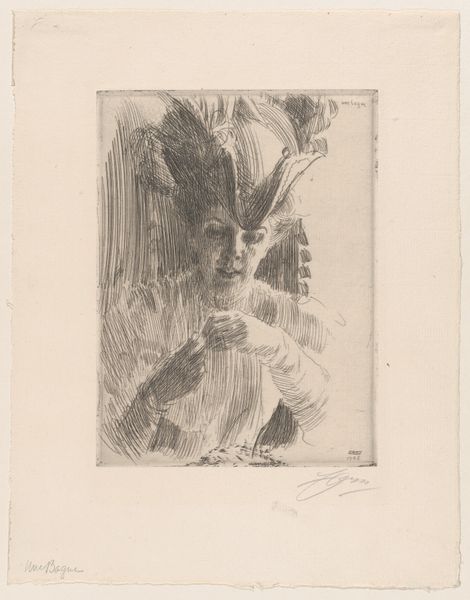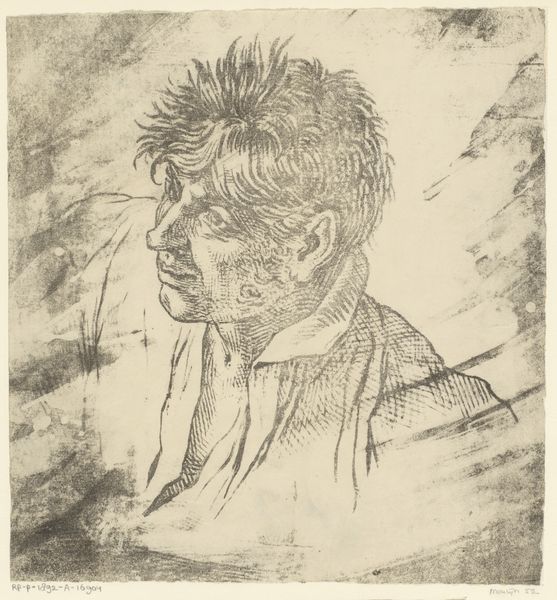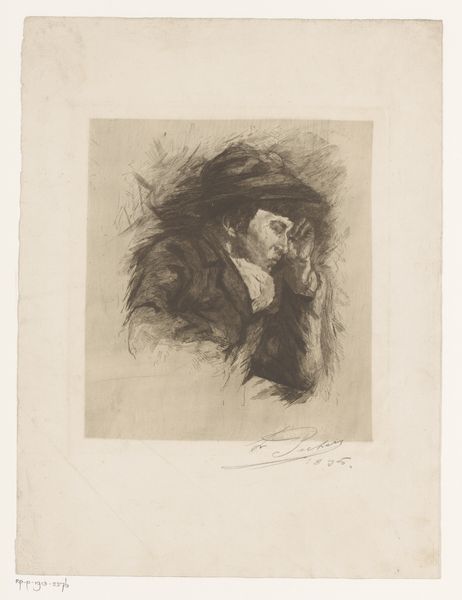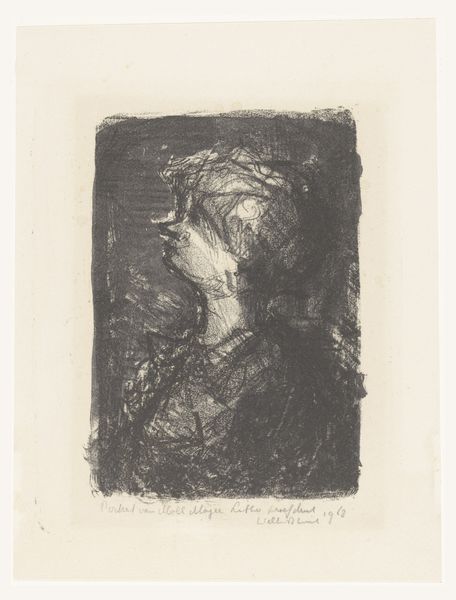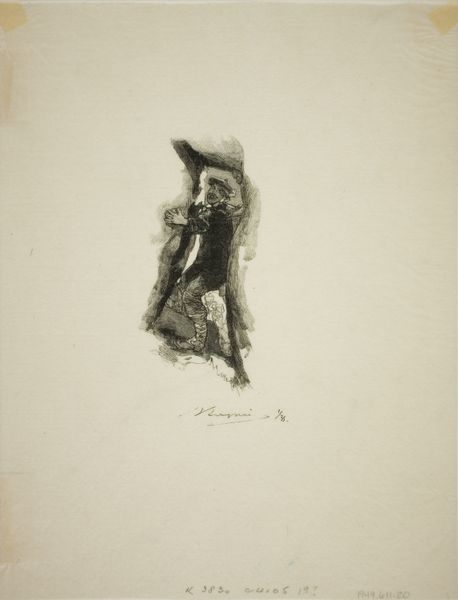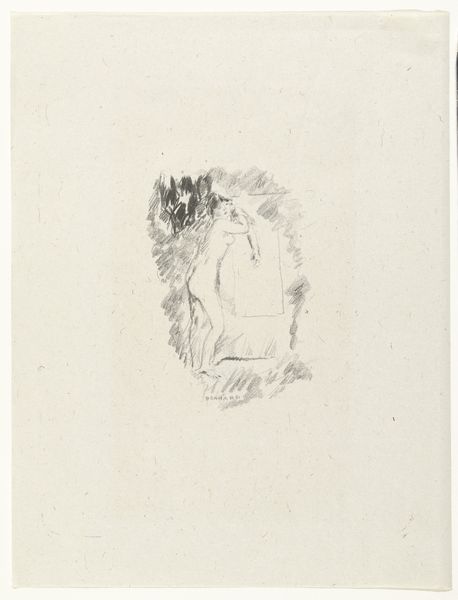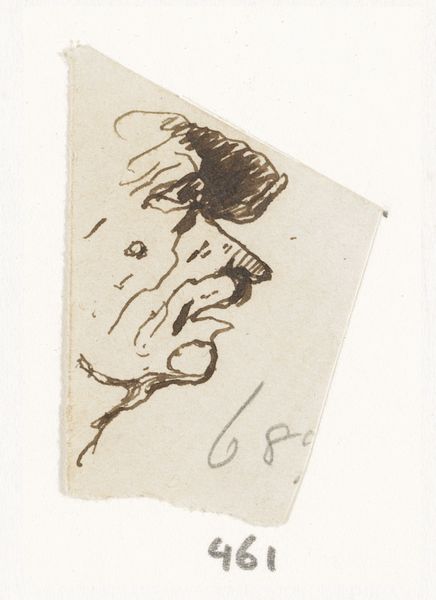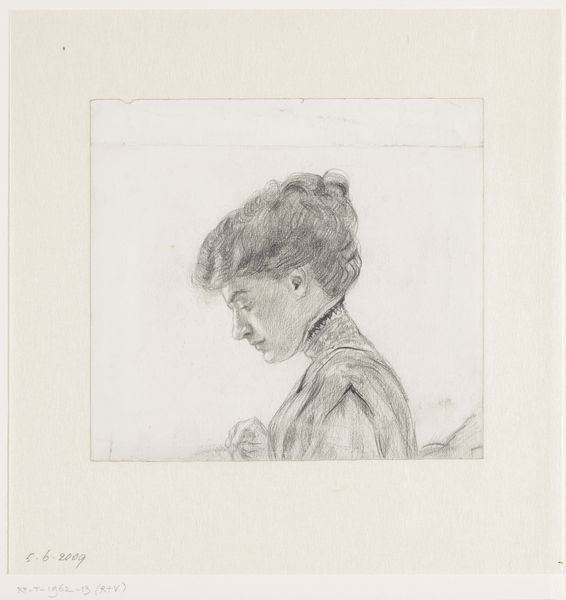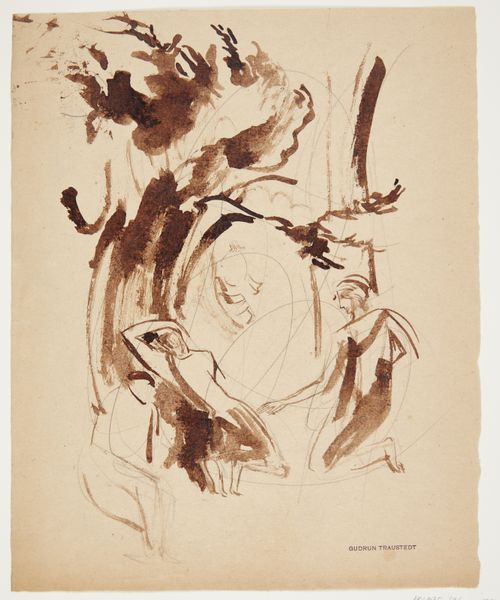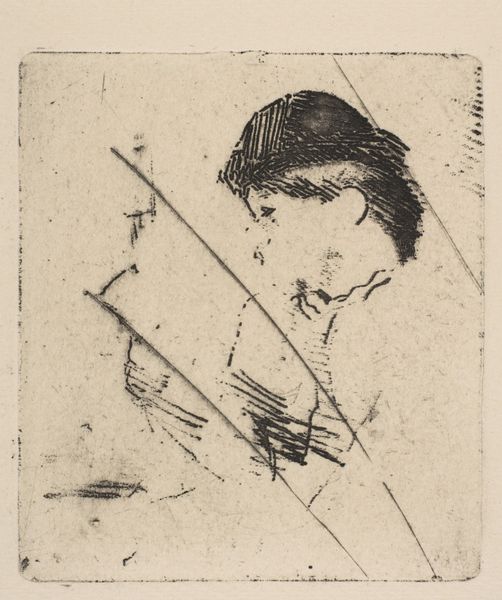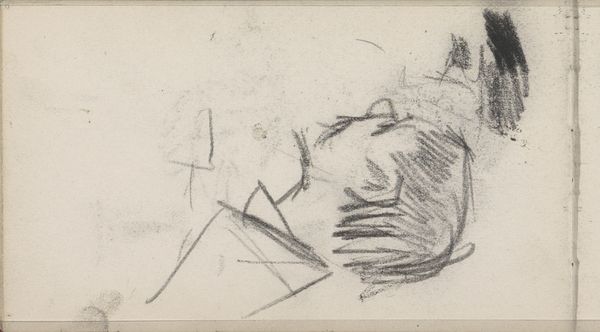
drawing, print, etching, paper
#
portrait
#
drawing
# print
#
etching
#
figuration
#
paper
#
pencil drawing
Dimensions: 115 × 75 mm (image); 120 × 80 mm (plate); 239 × 184 mm (sheet)
Copyright: Public Domain
Editor: This is Anders Zorn's "Gerda Grönberg I," an etching from 1891 currently at the Art Institute of Chicago. I’m struck by how modern it feels, almost like a quick sketch, yet the subject has such a distinct, assertive presence. What layers do you see beneath the surface? Curator: This piece invites us to consider the construction of celebrity and the gaze in the late 19th century. Etchings like these, mass-produced, played a role in circulating images and solidifying personas. The "Swedish actress" is literally framed within these class and gender dynamics. Who gets to be seen, and how? Editor: So it's about more than just portraiture? Curator: Absolutely. Think about the rapid social changes of that time – industrialization, urbanization, the rise of mass media, women entering the public sphere as actresses and performers. Zorn’s loose, almost gestural lines, which may read as modern to us now, were actually part of a visual language that negotiated these anxieties and possibilities. What do you think of the way she is portrayed in dress and demeanour? Editor: The feather boa is pretty bold, and her finger on her lip feels coquettish. Almost challenging. Curator: Precisely. The era grappled with anxieties surrounding female visibility and sexuality. How might the actress's own performance intersect with or subvert the male artist's representation, and how could the printing process become democratized? It's about recognizing the power dynamics at play in image-making, and questioning whose stories get told, and from what perspective. Editor: That adds a whole new level of understanding for me. I saw a portrait, but it’s really a snapshot of societal shifts. Curator: Exactly. And by examining these historical images, we can gain a better understanding of how representation continues to shape our perceptions of identity, gender, and power today. Editor: I will definitely view 19th-century artworks through a contemporary lens from now on.
Comments
No comments
Be the first to comment and join the conversation on the ultimate creative platform.
